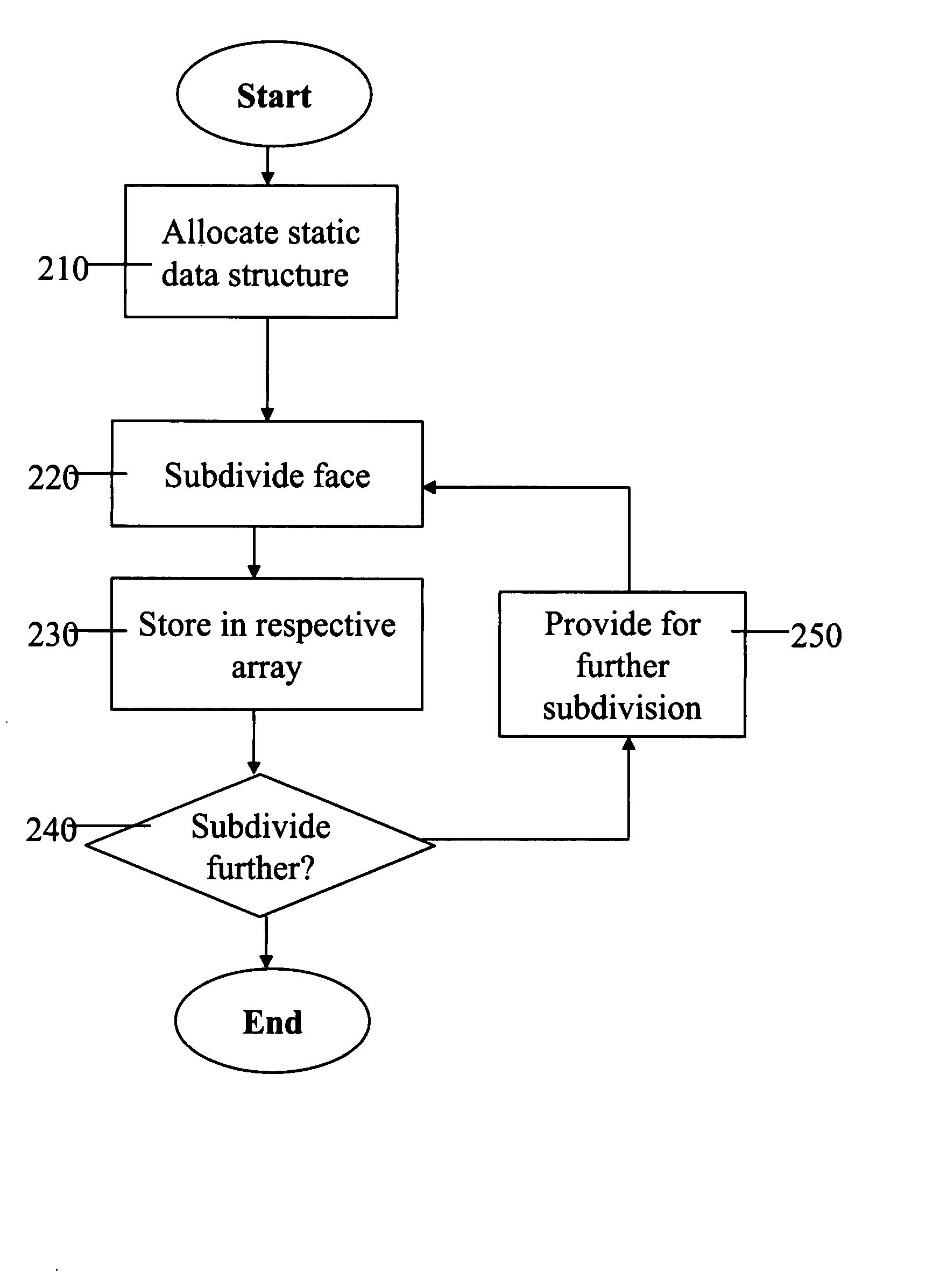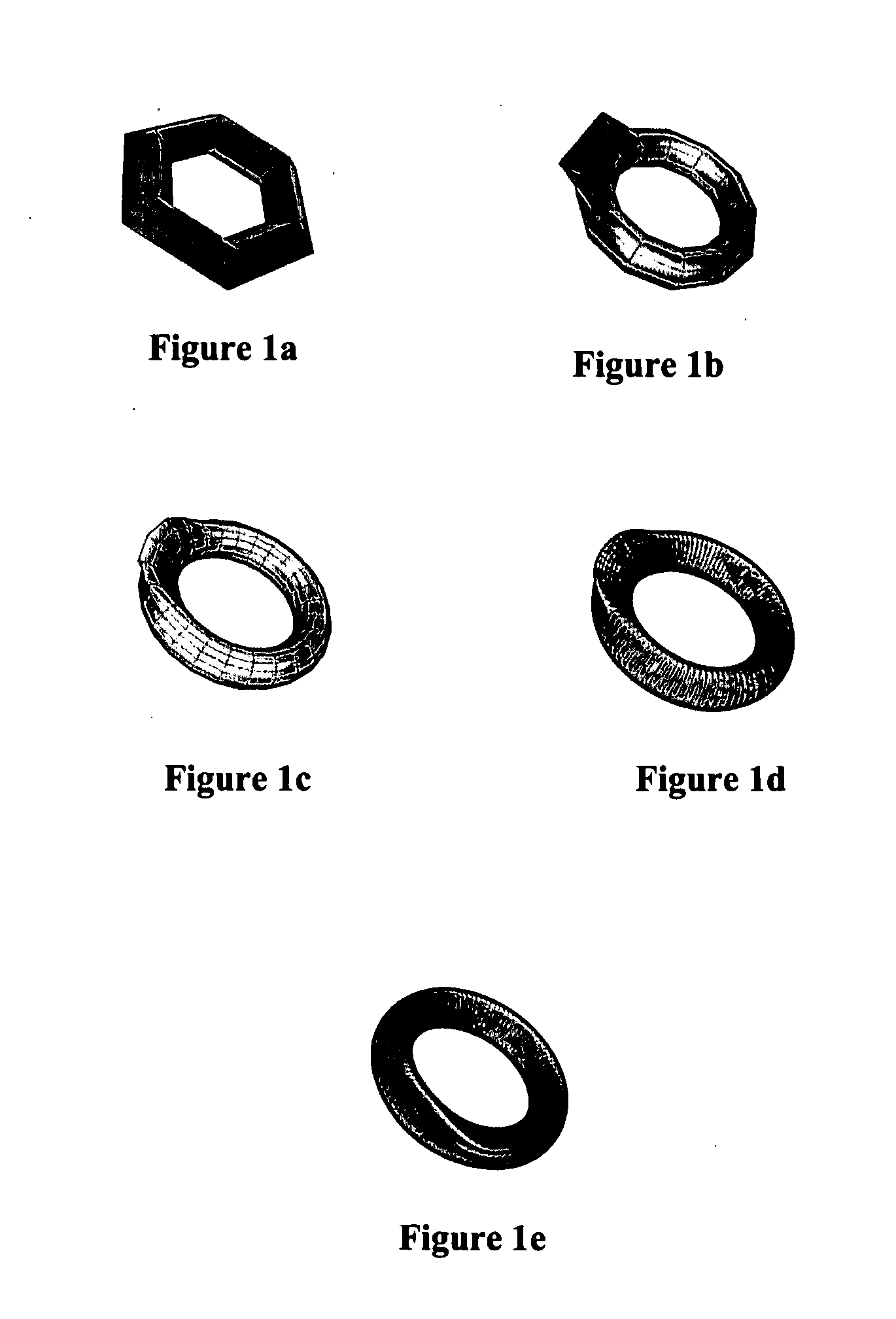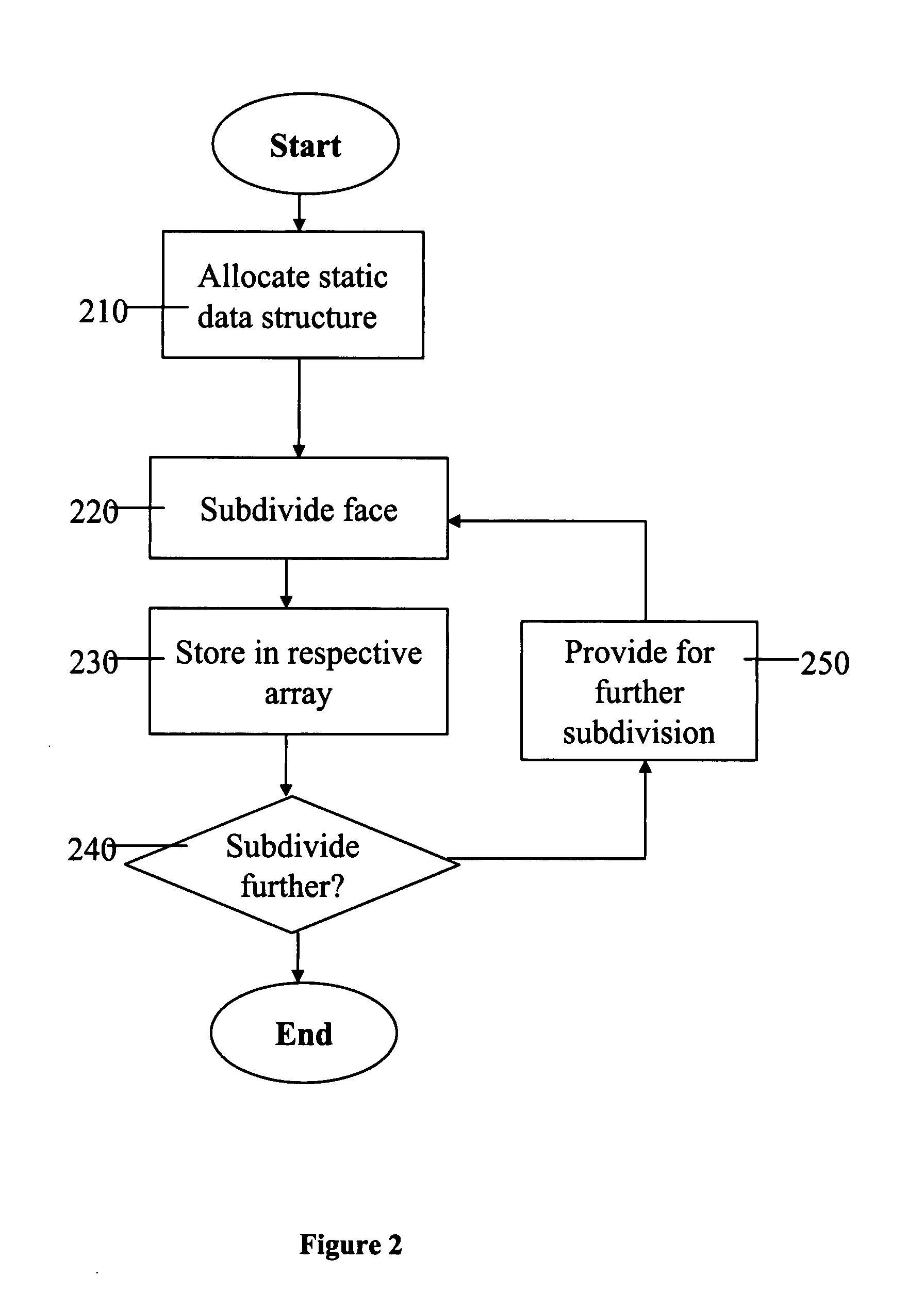Adaptive computation of subdivision surfaces
a subdivision surface and computation technology, applied in computing, 3d-image rendering, instruments, etc., can solve the problems of superfluous high memory consumption and run time, and expensive rendering of all of the fine mesh polygons
- Summary
- Abstract
- Description
- Claims
- Application Information
AI Technical Summary
Benefits of technology
Problems solved by technology
Method used
Image
Examples
examples
[0154] Reference is now made to the following example, which together with the above descriptions, illustrate the invention in a non-limiting fashion.
[0155]FIG. 13a shows a base mesh. The base mesh is adaptively subdivided and tessellated according to the above-described embodiments, to form the subdivided surface shown in FIG. 13b. FIG. 13c shows the same model with modified topology, which is obtained by deleting one of the faces of the base mesh.
[0156] The fully subdivided version of the mesh of FIG. 13a consists of approximately 150,000 quads (i.e. a mesh obtained by a uniform subdivision of all faces, such as the Catmull-Clark algorithm), while the adaptively subdivided version of FIG. 13b comprises fewer than 4,000 polygons (the exact number depends on the viewing direction). The resulting smaller number of faces leads to a reduced amount of computations and faster rendering. The dramatic reduction of the size of the finally rendered mesh is a consequence of the full flexibi...
PUM
 Login to View More
Login to View More Abstract
Description
Claims
Application Information
 Login to View More
Login to View More - R&D
- Intellectual Property
- Life Sciences
- Materials
- Tech Scout
- Unparalleled Data Quality
- Higher Quality Content
- 60% Fewer Hallucinations
Browse by: Latest US Patents, China's latest patents, Technical Efficacy Thesaurus, Application Domain, Technology Topic, Popular Technical Reports.
© 2025 PatSnap. All rights reserved.Legal|Privacy policy|Modern Slavery Act Transparency Statement|Sitemap|About US| Contact US: help@patsnap.com



